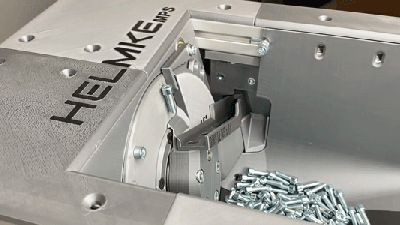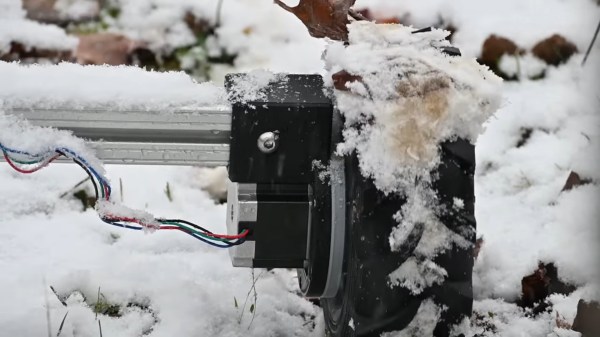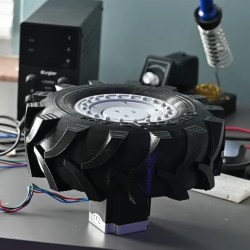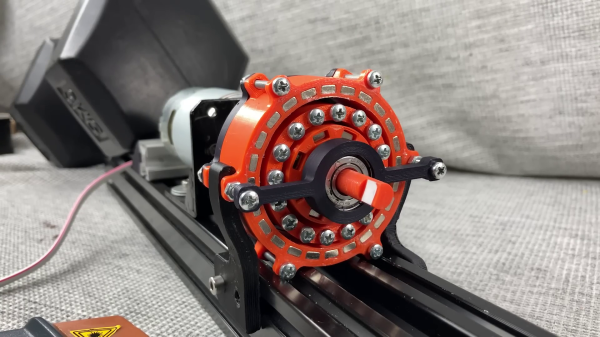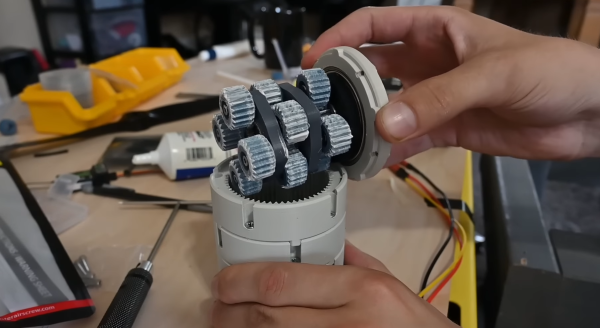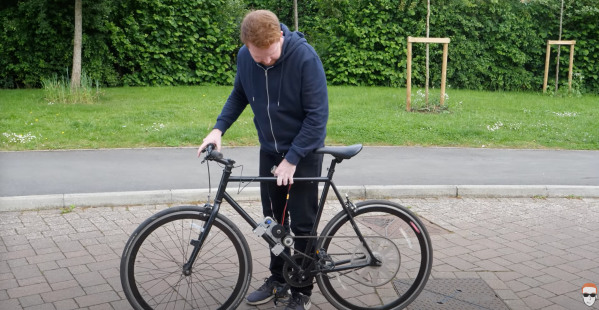DIY mechatronics always has some unique challenges when relying on simple tools. 3D printing enables some great abilities but high precision gearboxes are still a difficult problem for many. Answering this problem, [Sergei Mishin] has developed a very interesting gearbox solution based on a research paper looking into simple rollers instead of traditional gears. The unique attributes of the design come from the ability to have a compact angled gearbox similar to a bevel gearbox.
Multiple rollers rest on a simple shaft allowing each roller to have independent rotation. This is important because having a circular crown gear for angled transmission creates different rotation speeds. In [Sergei]’s testing, he found that his example gearbox could withstand 9 Nm with the actual adapter breaking before the gearbox showing decent strength.
Continue reading “Roller Gearbox Allows For New Angles In Robotics”




